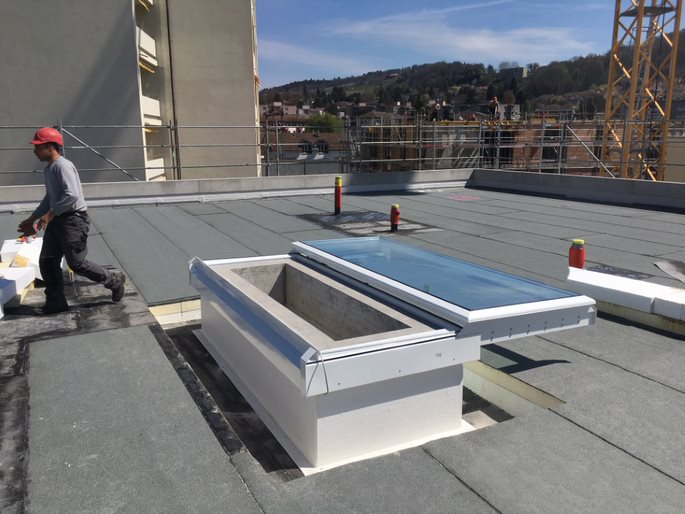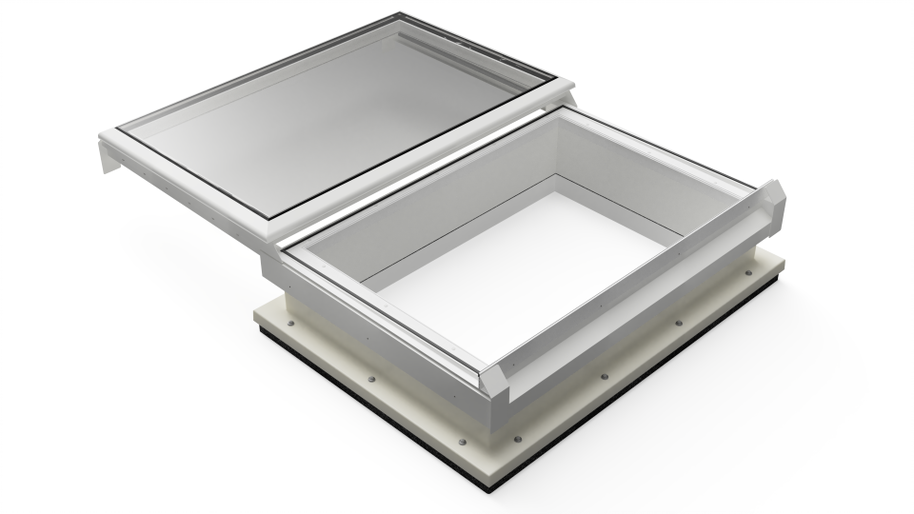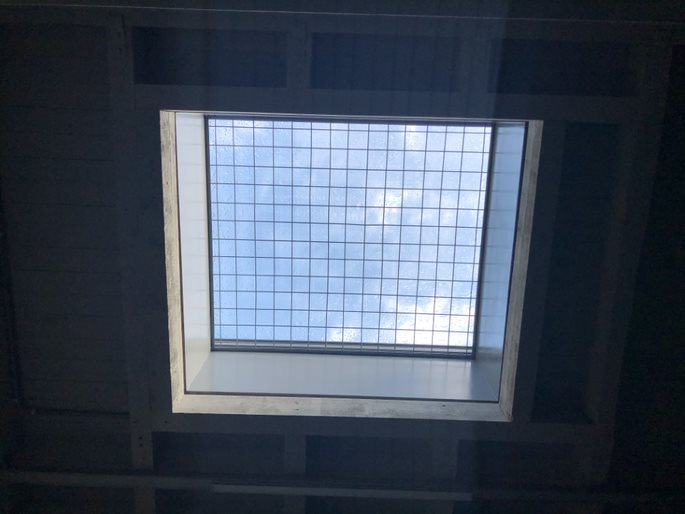

Technical Estimator, Tony Stevens, discusses how combining roof access and smoke ventilation into a single installation can have multiple performance, efficiency and aesthetic benefits.
When choosing roof access and smoke ventilation systems for flat roofs on commercial and residential projects, there are a range of factors that must be addressed to ensure the installation is fit for purpose and continuously provides the highest standards of functionality and safety. Here Tony Stevens, Technical Estimator at Bilco UK, discusses how combining roof access and smoke ventilation into a single installation can have multiple performance, efficiency and aesthetic benefits.
For commercial developments, ensuring safe and secure access to the roof space, in addition to appropriate smoke ventilation, can be leading considerations throughout the design, installation and maintenance stages. Dependent on the project’s specific requirements, this may lead to the installation of multiple Natural Smoke and Heat Exhaust Ventilators (NSHEVs) in addition to roof access hatches.
Whilst this may affect the overall exterior design scheme, particularly for stand out commercial projects including museums and hospitals, multiple roof penetration can also impact the overall thermal performance of the structure, as a significant proportion of heat in a commercial building is typically lost through the roof.
By taking an alternative approach, roofing professionals can proactively reduce heat loss and minimise the impact the products have on the visual appeal of the roof, without compromising on compliance and safety. For projects that require infrequent personnel access to the roof for maintenance, it is worth considering a smoke vent that can also be utilised as a roof access hatch.
A leading consideration, however, is that this does not impede the safety, security and functionality of the smoke vent, which must open to a minimum of 140° for a single leaf vent and 90 degrees for a double leaf vent, and must not make contact with or obstruct any other areas of the roof.
Roofing contractors must ensure the vent is in compliance with Building Regulations, Approved Document B, BS9999 and BS EN12101-2, whilst offering a minimum clear vent area of 1m². The smoke vent should also conform to Construction Products Regulation 305/2011 and be CE-marked with a Declaration of Conformity.
When choosing a ladder to enable the use of the smoke vent as a roof access hatch, roofing professionals should use an aluminium or galvanised fixed ladder. This will ensure the smoke vent is not obstructed at any time, enabling smoke to exit quickly and appropriately in the event of a fire. Retractable ladders cannot be used with a smoke vent as the scissor pack will impede the air flow.
The ladder should also be positioned opposite to the hinge of the access hatch (or to the non-actuator side in a smoke vent) and should be manufactured to EN121-2, BS ISO 1412-4 and BS EN4211. The installation of a vertical ladder over a companionway or retractable ladder also ensures the installation is unobtrusive on communal spaces such as stair landings, which may be frequently used by the building’s occupants.
By combining these two functions into a single application, roofing contractors have the opportunity to take the proficiency of the installation even further, by choosing solutions that also act as a rooflight. This is particularly beneficial for residential applications, such as student accommodation or hotels, where the installation provides the opportunity for natural light to enter the interior space, including corridors and stairwells.
Bilco UK’s SKY Flatglass can be utilised as a smoke vent, roof access hatch and rooflight. By featuring a single leaf flat glass construction, the sliding cover provides a functional approach to natural smoke ventilation, particularly for exposed roof areas where a hinged opening may not be suitable.
With a standard size of 1000 mm x 1500 mm, the SKY Flatglass provides a 1m² clear vent area, and when being utilised as a roof access hatch, offers manual or powered operation, opening to 180° (horizontal opening) for safe and secure access.
To ensure the highest standards of safety and functionality, roofing professionals should consider the provision of additional safety measures, such as Bilco UK’s Ladder Up® Post. This will ensure safer exit and entry for contractors when gaining access to the roof space by as three points of contact can be maintained whilst using a fixed vertical ladder.
By taking an alternative approach to smoke ventilation and roof access, contractors can minimise the roof penetrations required by using a smoke vent for occasional access, without compromising on safety or functionality.
For further information on Bilco UK’s complete range of roof access solutions call 01284 701696.

Bilco UK SKY Flatglass for roof ventilation and roof access

The innovative SKY Flatglass roof access hatch and smoke vent from Bilco UK

Bilco UK SKY Flatglass can be used as a rooflight to enable more natural light into interior spaces
Bilco CPD Seminars
Book your place today >>
Looking for our latest Brochure, BIM Drawings or NBS Specifications?
View our Resource Centre »